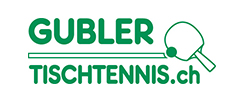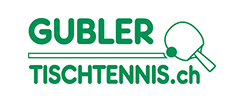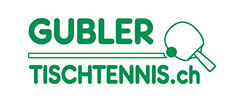Roules
Racketlon is the sport in which you play your opponent in each of the four racket sports table tennis, badminton, squash and tennis. In general the rules of the single sports are applicable. The following rules are exceptions and extensions.
Order of sets
Tischtennis, Badminton, Squash, Tennis - From the smallest to the largest racket.
Counting
-
4 set until 21 points - At 20:20 the set is extended until there is a margin of two points. -
Running Score – Each ralley results in a point -
The one who serves also counts -
Total points count – The winner of a Racketlon match is not the one that wins most sets but the one that scores the most points in total. This means that it is possible to lose three out of the four sets and still win the match! Das Match wird abgebrochen sobald der Sieger uneinholbar in Führung liegt und die restlichen Punkte keine Bedeutung mehr haben (Ausnahme Gruppenspiele). -
Gummiarm Tiebreak– If, after all 4 sets, both players have exactly the same number of points, then one extra point is played in tennis. The toss decides who will serve. The one who serve has only one serve instead of two. Serving & End of courts
-
Toss before the match - The winner of the toss decides whether to start serving or receiving in table tennis. The player, who starts serving in table tennis, starts receiving in badminton, starts serving in squash and starts receiving in tennis. -
In each set (except in squash, of course) the player who starts receiving decides what end to start the set from. -
Switch at 11 – Ends are switched at the time when 11 points are first reached by any of the players (exception in Squash). -
Two serves each - After every two points the serve goes to the other player. At the first of these two serves the server always serves from the right (except in table tennis, of course). The second serve is from the left side. -
One serve each after 20:20 - After 20:20 the serve switches hand after every point until the set is decided. The two first serves are from the right, the two next serves are from the left and so on. Time Intervals & Continuous Play
-
One minute at 11 - A maximum break of one minute shall be allowed at 11 (i.e. when 11 points is first reached by any of the players) in each set. -
3+3 minutes between sets - The break between sets shall be maximised at "3+3" minutes meaning: (a) Warming up at the next sport has to commence within 3 minutes after the end of the previous set. (b) The next set has to commence within 6 minutes after the end of the previous set. -
Continuous play - Play must be continuous at all times (as far as can be reasonably expected). Umpires and referees have the right to penalise players under the misconduct rule should they breach this. -
Restricted pausing - Players may pause for a brief drink and to towel down every five points only (so after 5, 10, 15 points, etc), if this is breached the umpire may penalise the offending player. If sweat has dripped onto the table tennis table, badminton court, etc, then of course the player may use a towel to wipe that away at any time. Conduct on court / penalties
For any act of misconduct (as judged by the umpire) such as swearing, threatening behaviour, racket abuse, delaying or dangerous play, etc, the player shall be penalised as follows (on a per match basis):
-
1st incident - warning -
2nd incident - player loses a point -
3rd incident - player loses the set -
4th incident - player loses the match and is disqualified from the tournament. Injury
-
5 minutes once - Each player is allowed one injury time-out per match of 5 minutes. -
Stop bleeding - It's not allowed to play if you are bleeding. -
Extension at collision - If any injury is the result of a collision with the opponent, the umpire may allow the player as much time as he needs, and if necessary, penalise either player. Double rules
The rules of each sport and the singles rules above regulate most aspects of a doubles match. Here you'll find some additions:
Players on Court
Both players of each pair must be on court for the table tennis, badminton and tennis. The exception is squash, which is played as singles.
Serving and Ends of Court
-
Definitions: The examples below refer to a match between Pair A (containing players A1 and A2) and Pair B (containing players B1 and B2), where the digit 1 denotes the players serving and receiving first (in the set) respectively. -
The toss: As in singles there is one single toss done before the match deciding which team starts to serve in each set and which team gets to decide what end to start playing at. Specific to doubles it is the team that starts serving that, in each set, decides which of the two players shall start serving. Likewise, it is the receiving side that decides which of the two players starts receiving. The receiving side may make their choice after they know who will serve. (This rule (b) regarding serving, receiving and ends of court apply to all sets except squash, see below.) -
2 serves each: As in singles each serve game contains 2 serves, meaning that each server gets to serve twice before the right to serve moves over to the next server. With the exception of the extension after 20-20, where the serve switches hand after every point. -
Right then left: As in singles the first serve in each serve game is always from the right and the second from the left. Except in table tennis where the serves are always from the right as in standard table tennis doubles. -
Table tennis: The order of serving/receiving rotation in table tennis starts with A1 to B1, B1 to A2, A2 to B2, B2 to A1 and this cycle repeats itself until 11 is reached. At that stage the two players that are about to receive switch positions with each other and the cycle changes into A1 to B2, B2 to A2, A2 to B1, B1 to A1. (Note that the regular position switches only occur after each serve game and only on the side which has just been serving.) -
Badminton: The cycle for badminton serving is simply A1 - B1 - A2 - B2 throughout the set. The receiving is guided by the badminton rules that suggests that the players keep their positions except the serving side when the server moves to serve from the left side after having served from the right. This gives the following cycle: A1 to B1 then A1 to B2, B1 to A2 then B1 to A1, A2 to B2 then A2 to B1, B2 to A1 then B2 to A2. Which repeats itself without change until the end of the set. -
Tennis: As in badminton the cycle for serving in tennis is simply A1 - B1 - A2 - B2 throughout the set. As regards the receiving each team choose which player returns on the forehand and which player returns on the backhand side and this stays the same throughout the set. Squash
-
Switch players at 11: The squash is played as one singles set to 21 in two parts. In the first part player A1 (from team A) faces player B1 (from team B). When 11 is reached the players are switched so that A2 faces B2 in the second part of the set. The scoring is kept at the switch so that A2 takes over A1's score while B2 takes over B1's score. The serving is handled in the same continuous way (e.g: A2 starts serving from the left if his partner (A1) served from the right in the previous point). -
Player Order in Doubles - Except Mixed -
Definition: Decisive for the playing order is the order of inscription. The first name in a double team always starts the squash match, the seconde name in a double team always ends the set. (The tournament organisation recommends to put the better squash player always in position 2). -
Wrong order penalised by 0-21: If any of the pairs violates the ordering rules specified in this paragraph (Player Order in Doubles) the offending pair will automatically lose the squash to zero and the opponents will register a win with the full allocation of points. -
Player Order in Mixed Doubles / Ladies first: In Mixed Doubles, the women play each other first and then the men take over to finish the set. Gummiarm Tiebreak
As in singles there is a Gummiarm tiebreak if the pairs have exactly the same number of points after four sets. Specific to doubles the serving side shall decide who will serve within the pair. Similarily, the receiving side shall decide who will receive within the pair.







